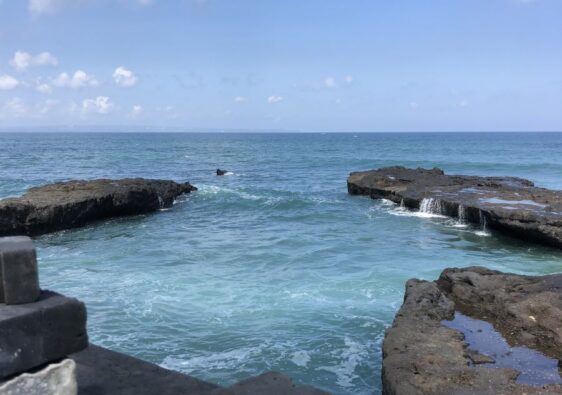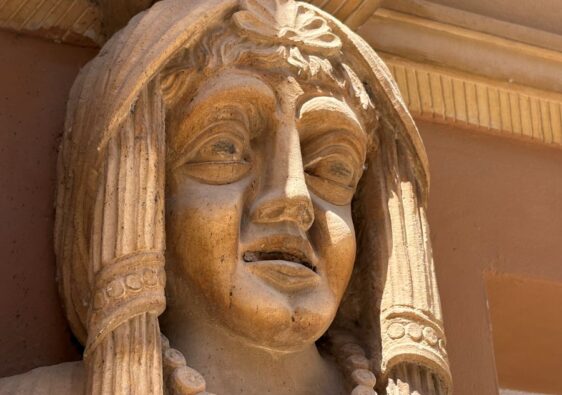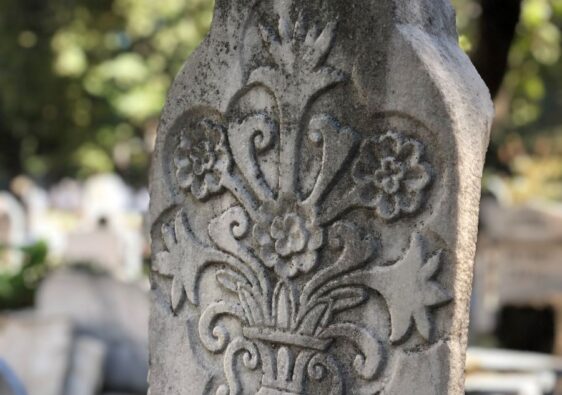My time in Seville is shorter than it usually is in any given destination. I have had to choose between seeing some amazing things on this first visit. I knew about this place before I arrived and actually purchased my tickets weeks ago. Dive into the Royal Alcazar of Seville with me and have an extraordinary experience.
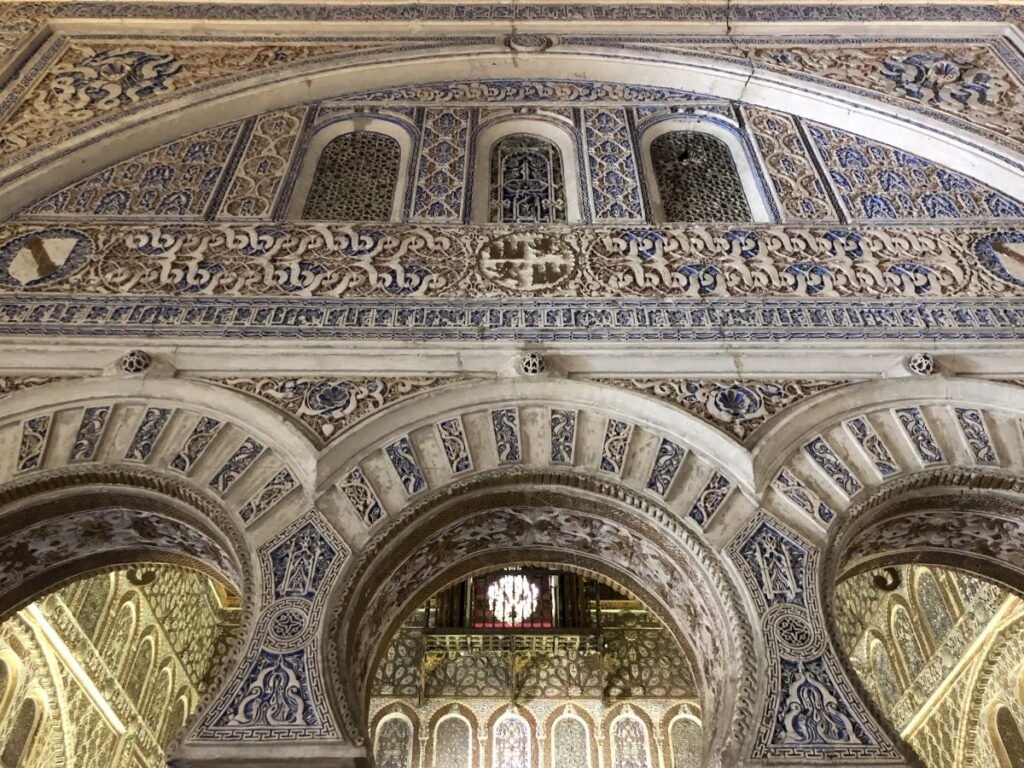
Getting There & Tickets
Located in the heart of the city, visitors will find this royal palace, the Plaza de Espana and the Seville Cathedral all in the same area. A quick google search, link here, is the location for this visit. More specifically visitors can only enter through the Puerta del Leon.
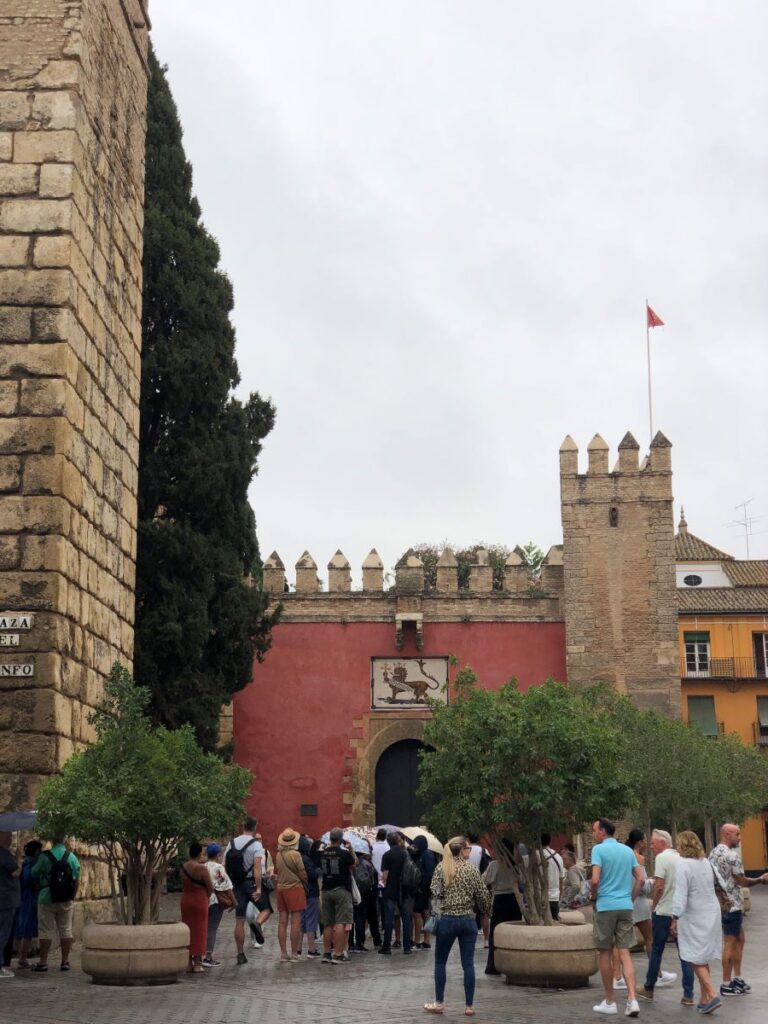
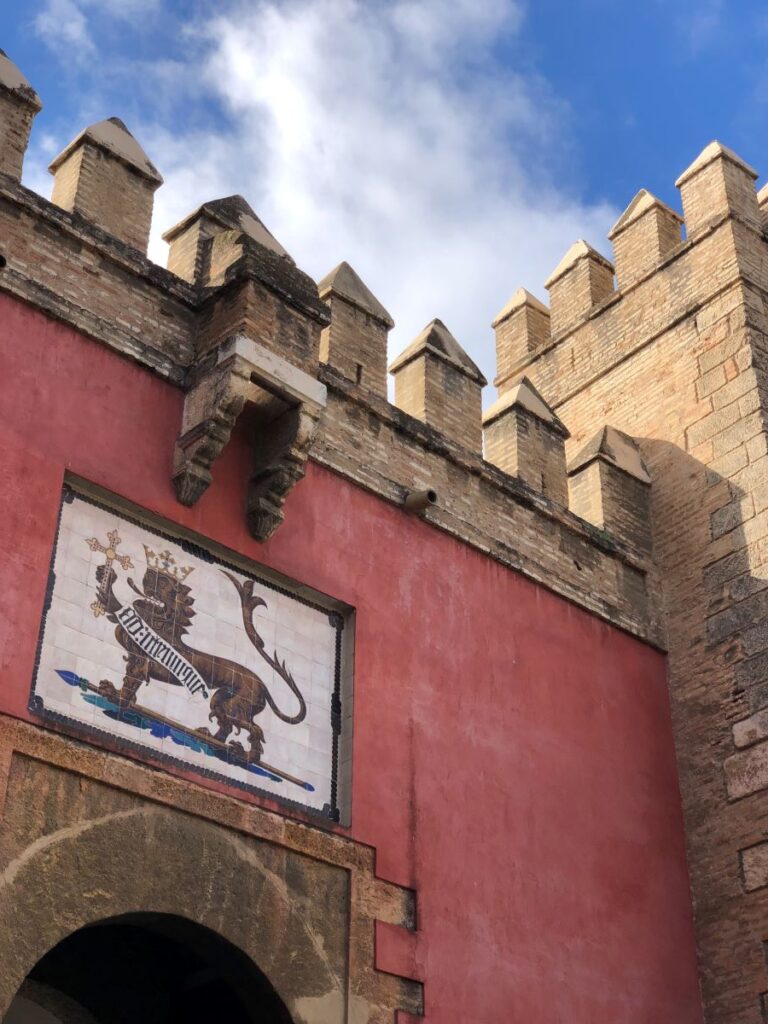
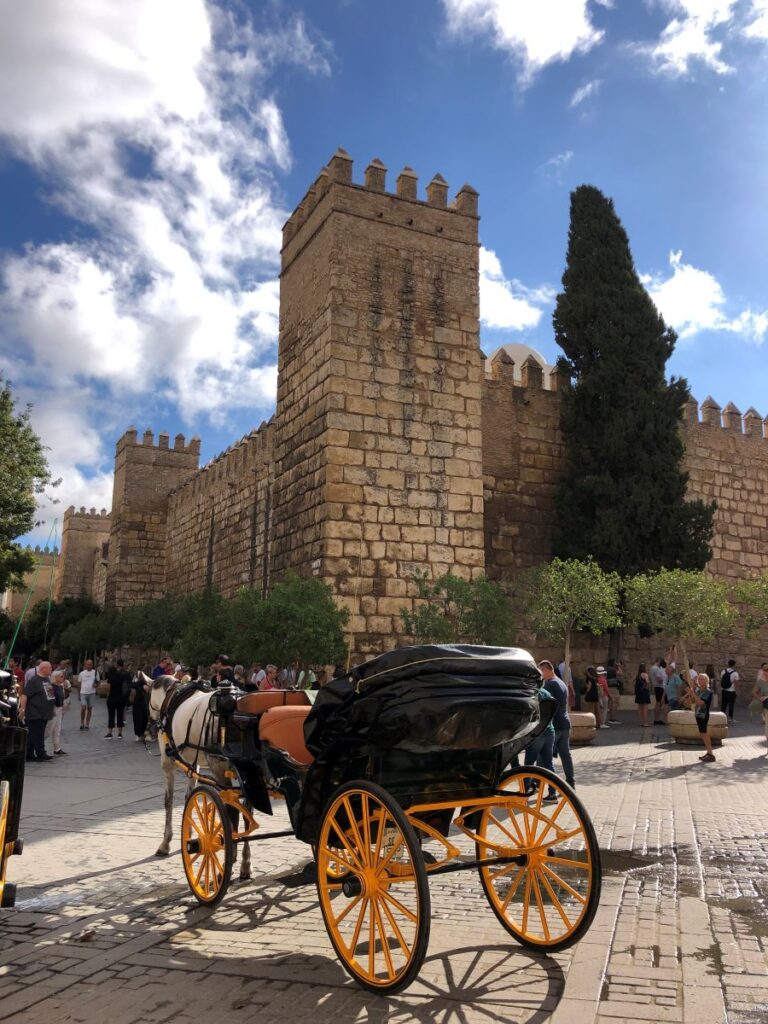
A limited number of tourists are allowed to enter at regular intervals throughout the day. These time slots begin at 9am. I booked my ticket online three weeks prior and was only able to secure an 11am entry, the earlier ones had already been sold out.
If you are visiting in the peak season, I would try and book your tickets 2-3 months in advance if you want to gain entry at all, let alone be inside the palace before lunch time. In off season, at least a month ahead if you want that 9am slot. Cost for me booking through Klook was $26 CAD. Through the actual Real Alcazar website, the cost is €13 or $20 CAD. You line up outside the gate 10-15 minutes before your time slot and have a small leeway before your are turned away and have missed your chance to enter.
Brief History
Originally built in the 10th century during the Islamic Era, and was a fortress initially. In 1248, the Christians ruled under Ferdinand III of Castile. At this time, the citadel underwent a massive transformation and with that the Gothic Era architecture was brought in.
In the 14th century, much of the palace was rebuilt and modified by Pedro I. The intricate and ornate Mudejar Style, which is what we are in awe of seeing today, was created. And in the early 16th century the Catholics built the upper floors which are still in use today by the Royal Family when they visit Seville.
Tiles
One among many things, that this palace is known for is the extensive tile work. Showcasing majolica, artista and a picturesque tile from the 16th century in the Gothic quarters. The earlier tiles are exquisite, with raised edges and deep colours. Patterns so pretty and simplistic but when laid together form such a rich tapestry.
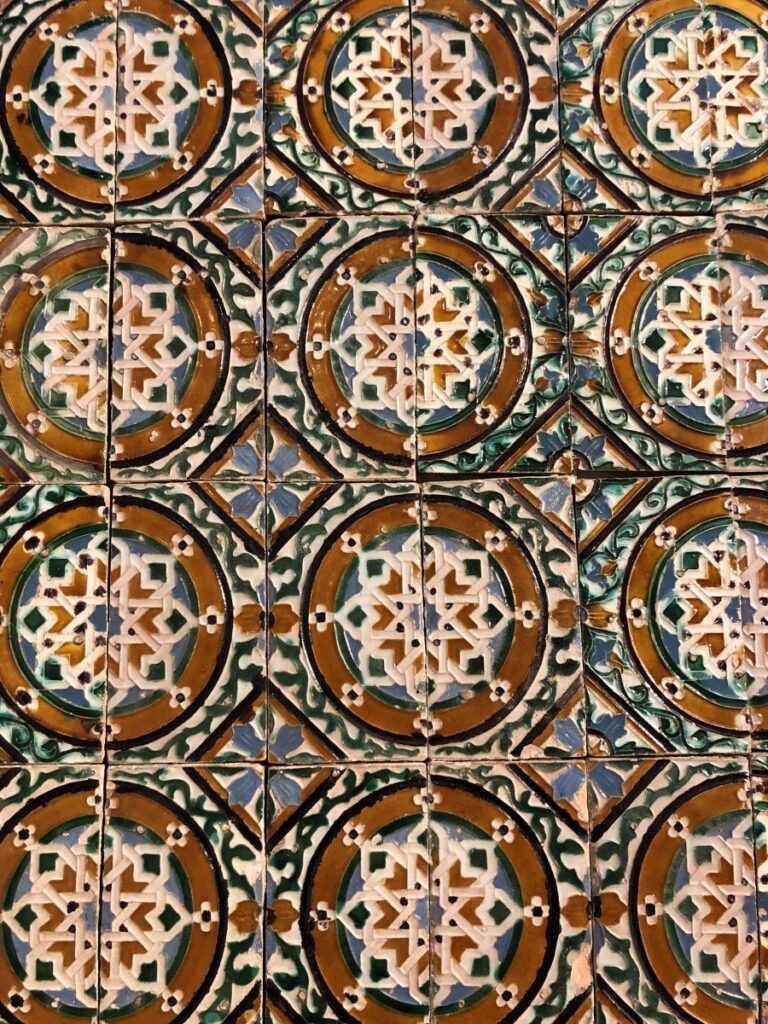
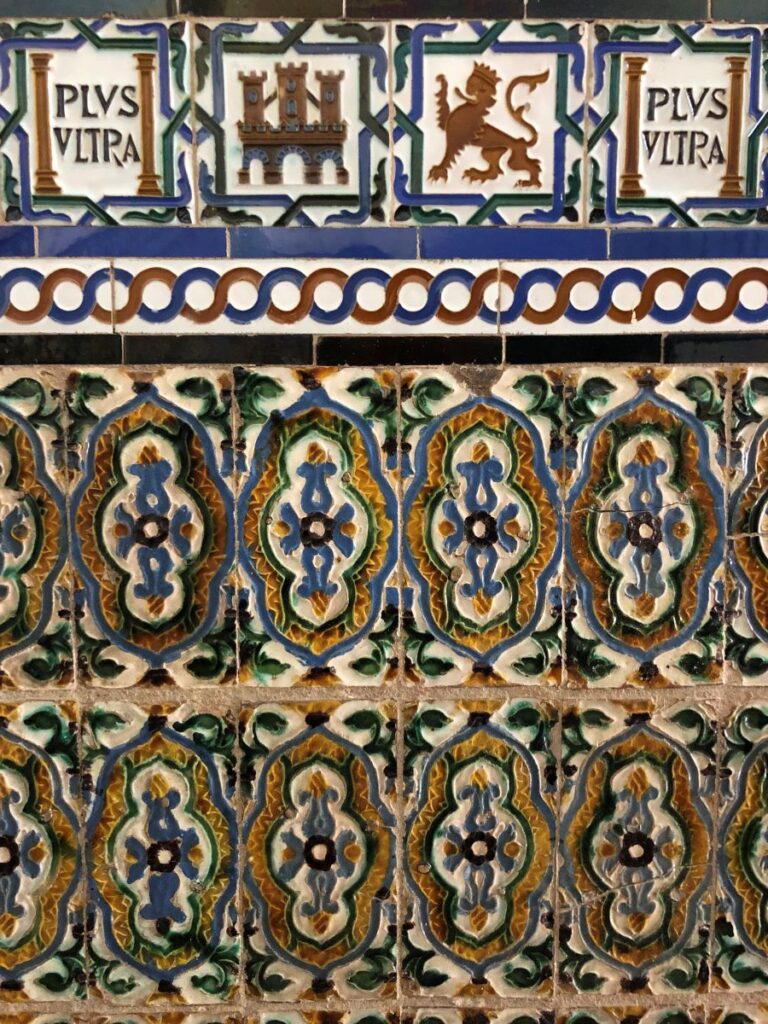

The later tiles, the ones with animals, flowers and figures are what I find particularly interesting. How each picture is depicted, how the tiles join together perfectly in places and in others not at all.
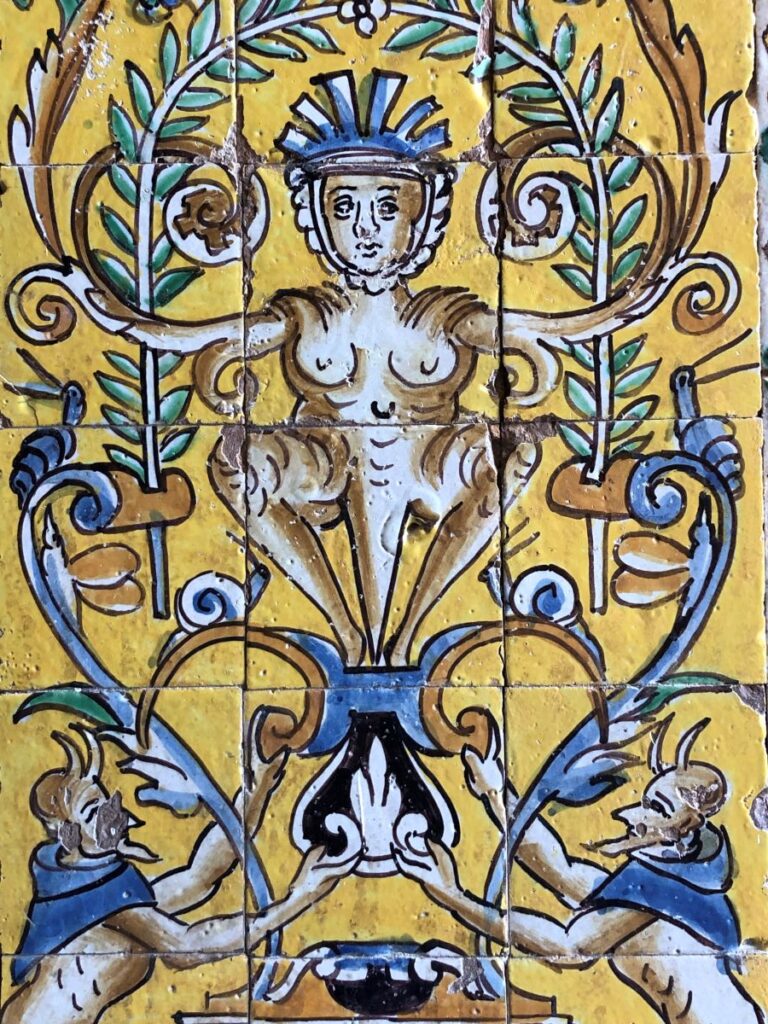


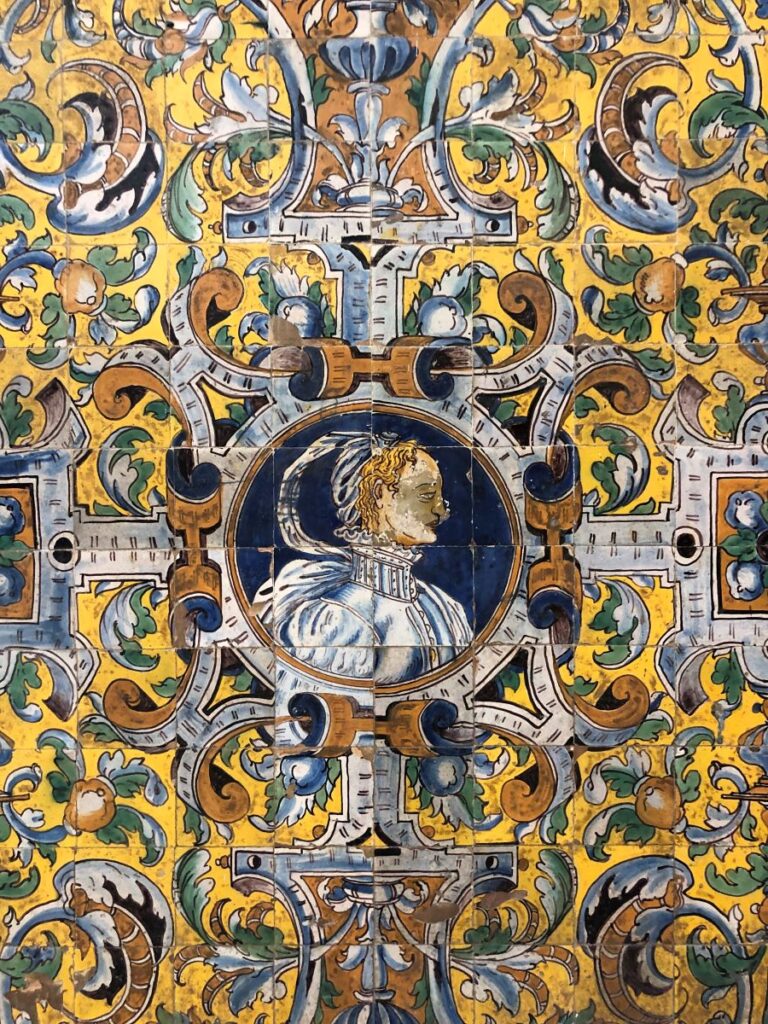
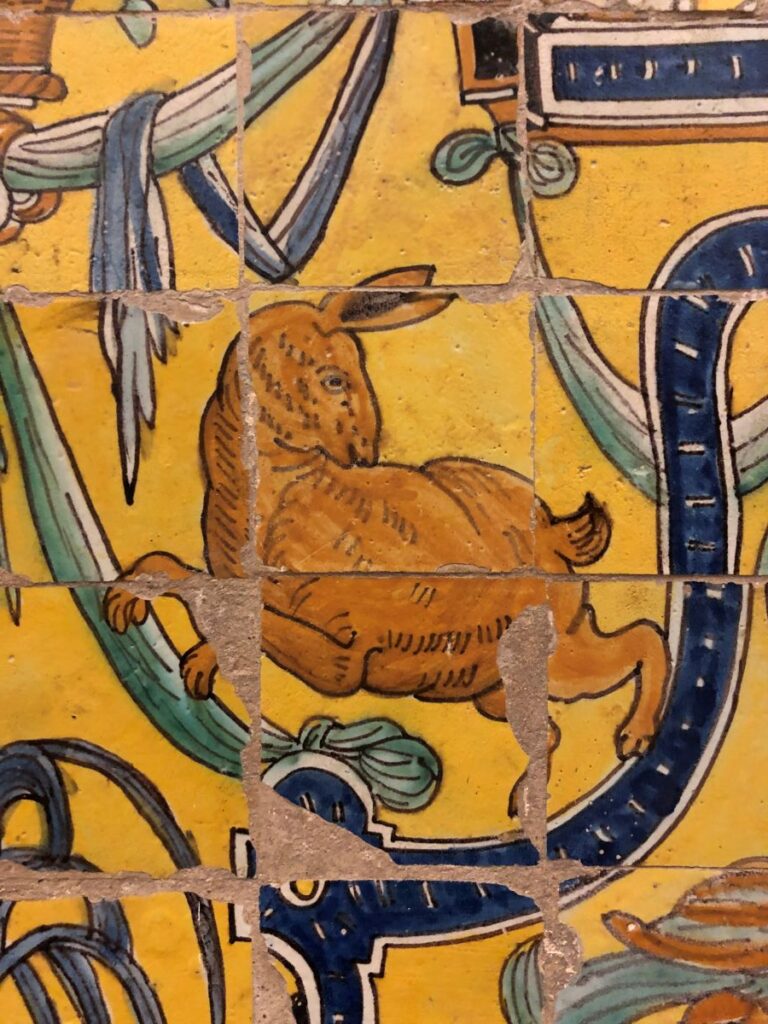
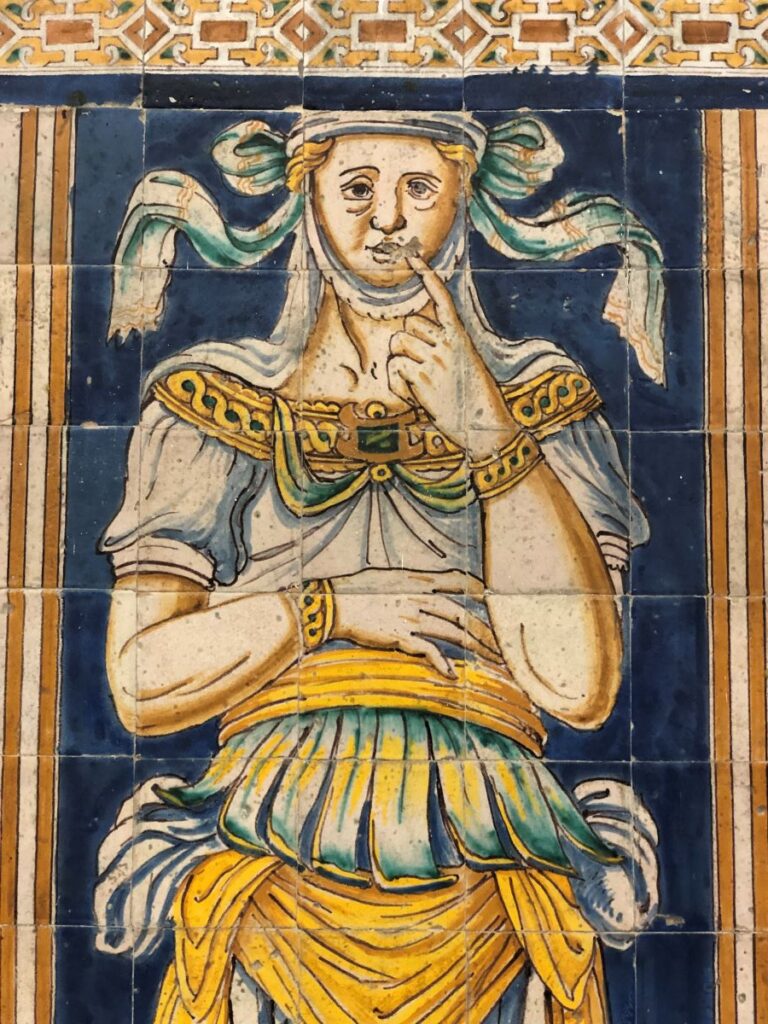
The animals pecking the eyes of each other and human figures is particularly intriguing. The warm colours, yellow, blue, brown and white, covering entire lower sections of the walls is glorious to behold.
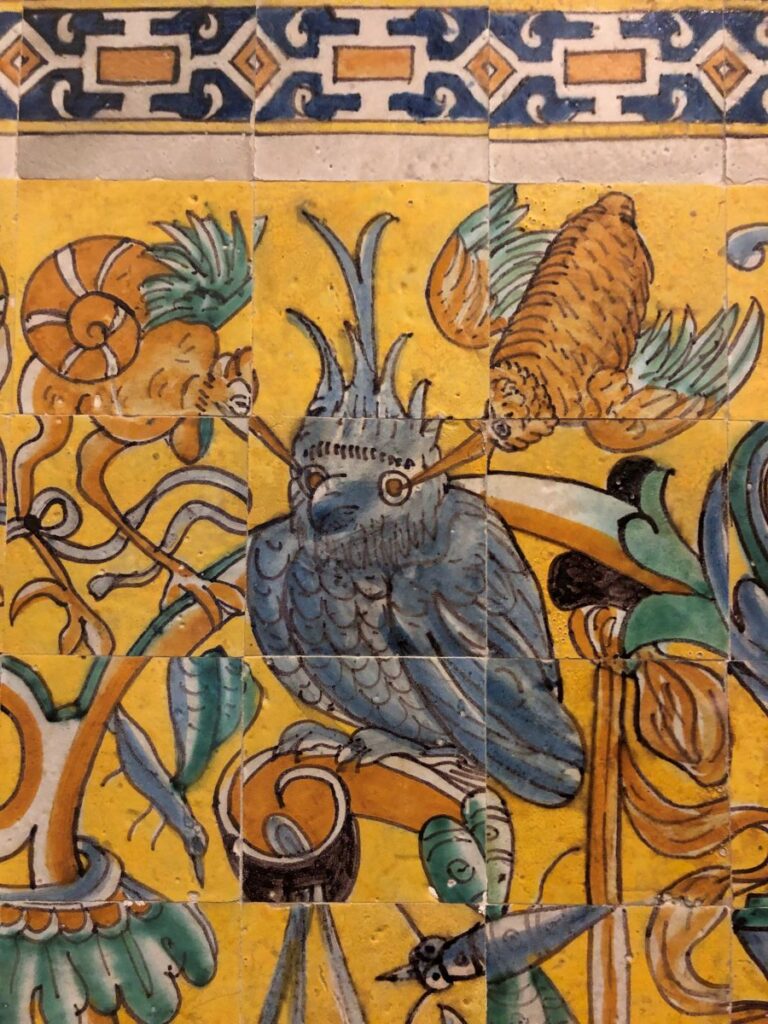
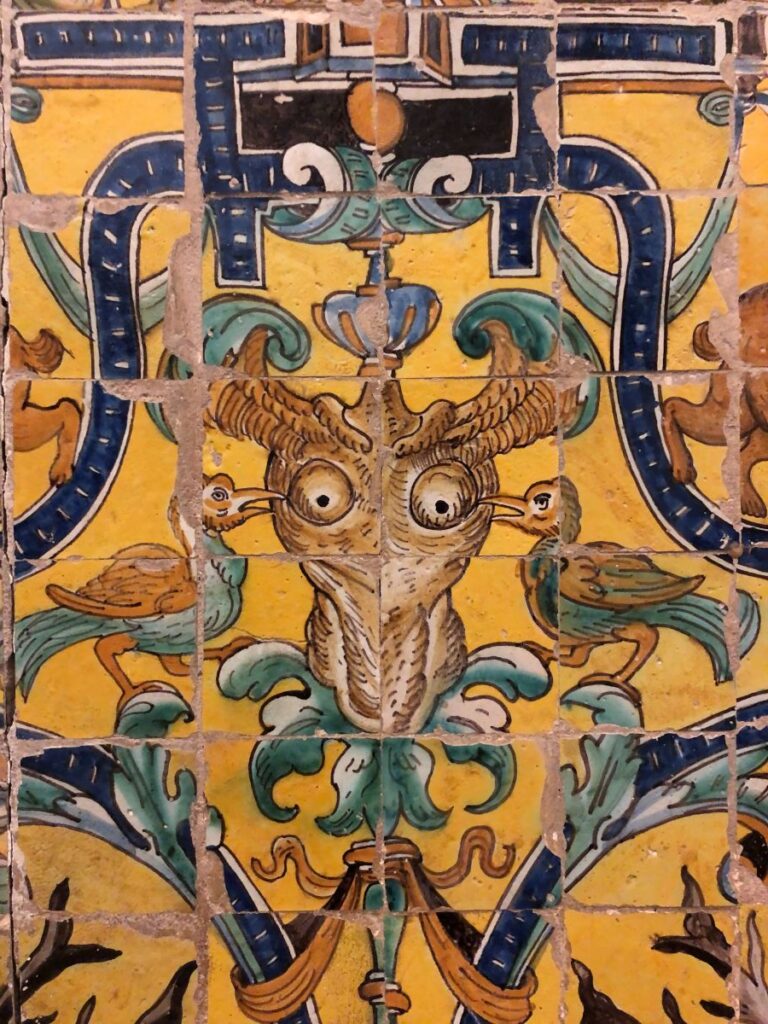
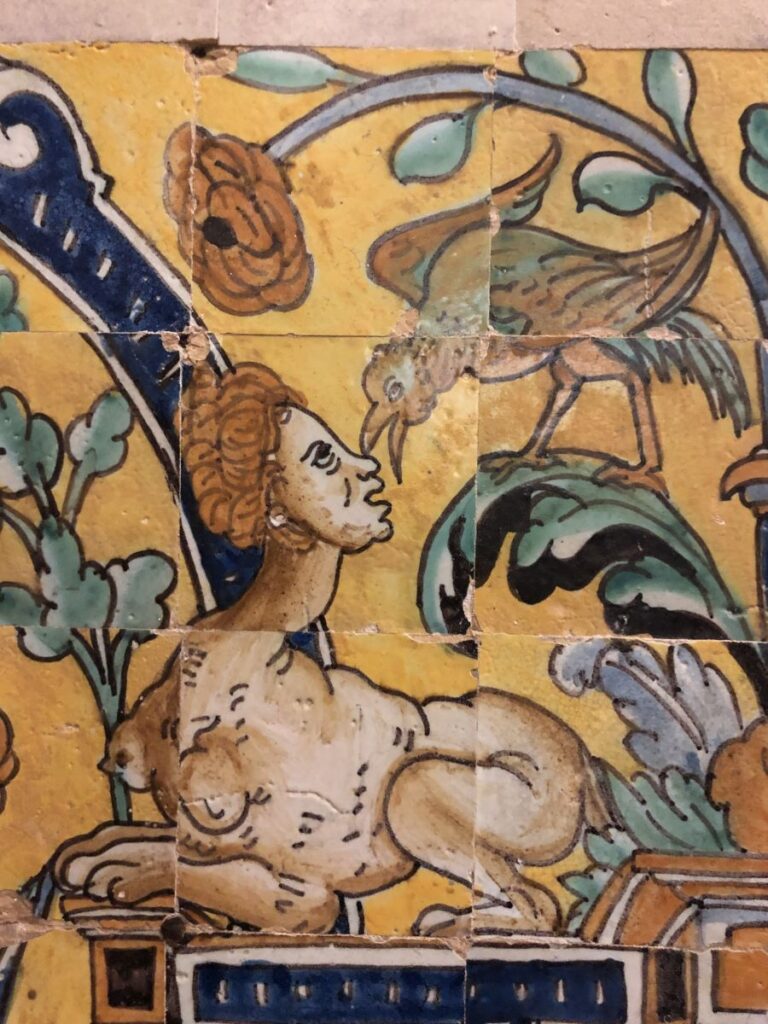
Hall of the Ambassadors
There are so many parts to this palace, I will highlight a very few that made a particular impact on me. On such was the Hall of the Ambassadors. Built in the 1300’s, this large square and cavernous space is utterly breathtaking.
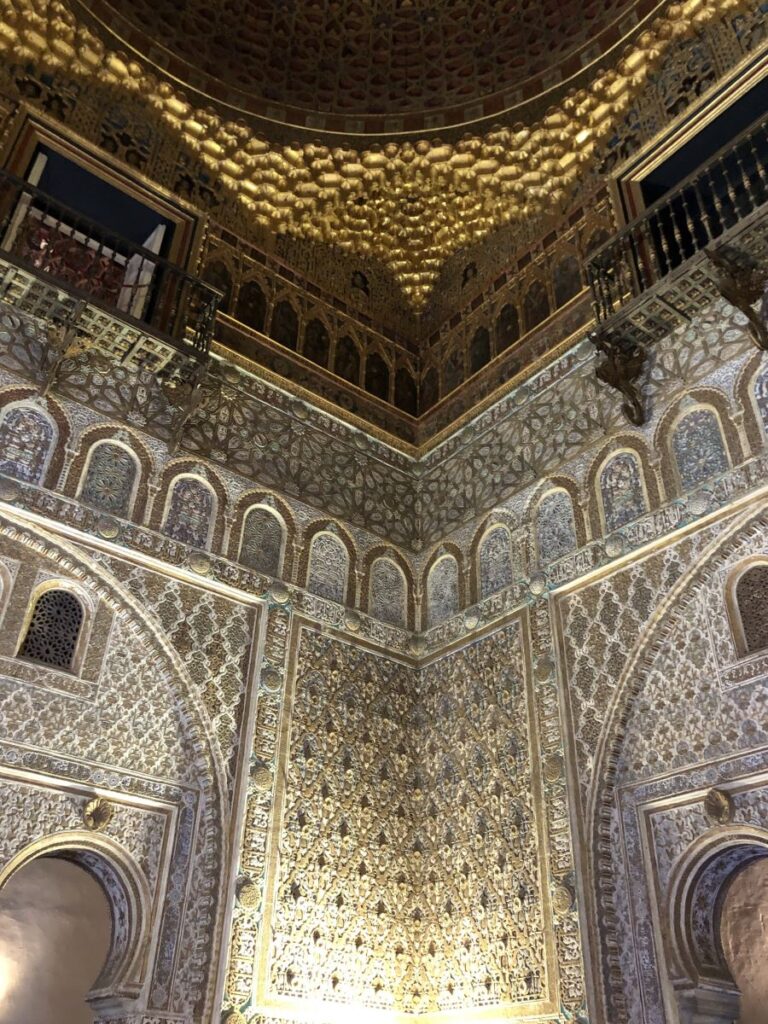
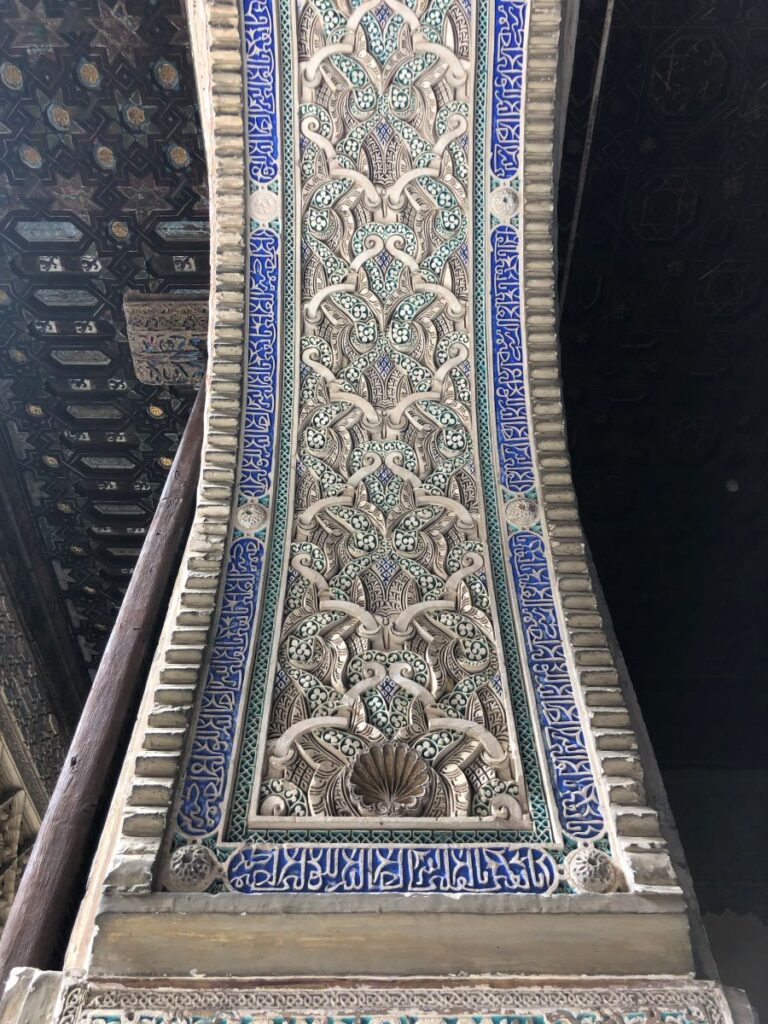
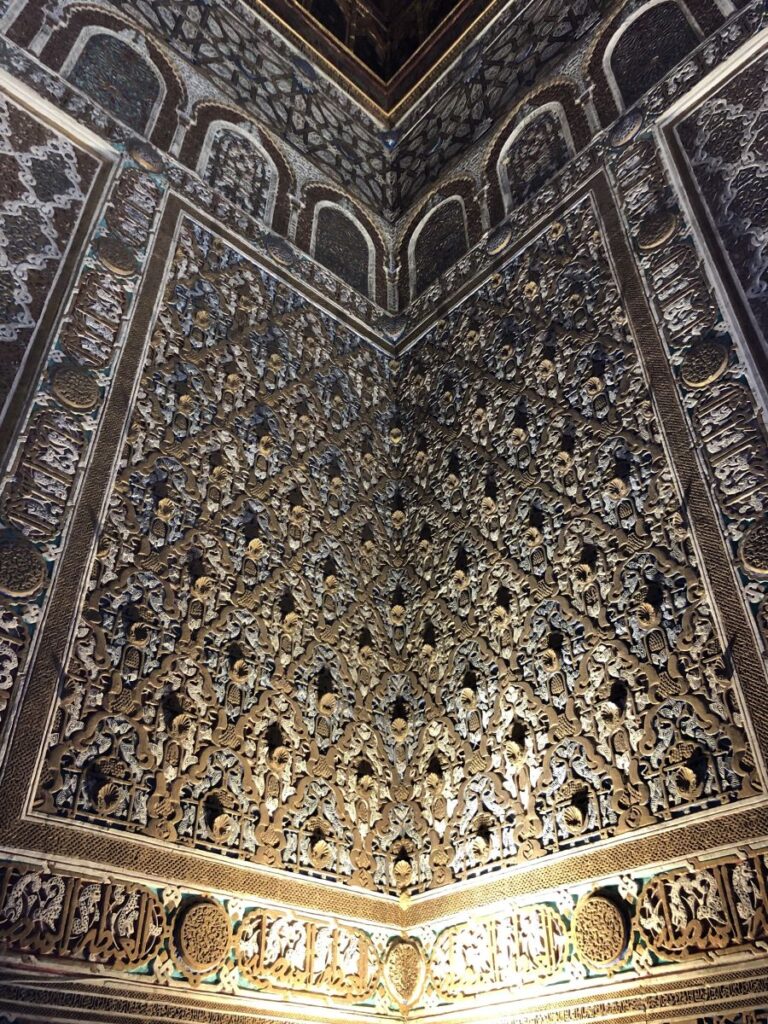
The plaster work alone takes so long to absorb and comprehend, its detailing and subtle colour patters sublime. The entire room is covered with tile along the bottom portion of every wall. There are large horseshoe archways that transport visitors from one section to another that are indescribably beautiful when viewed in unison.
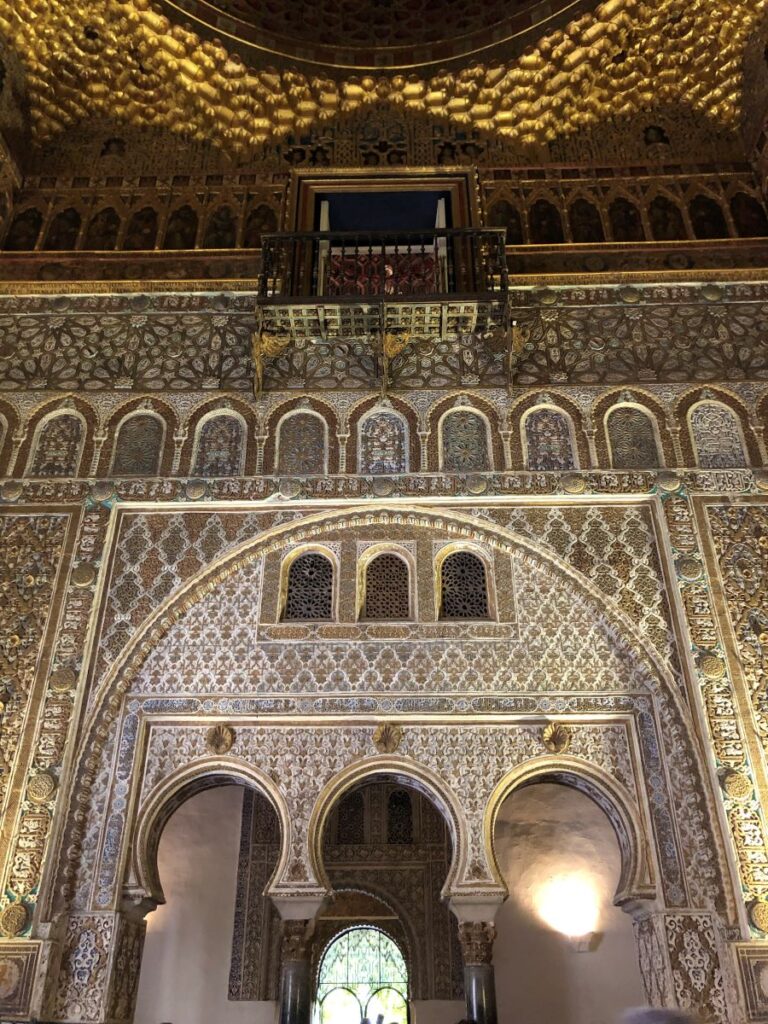
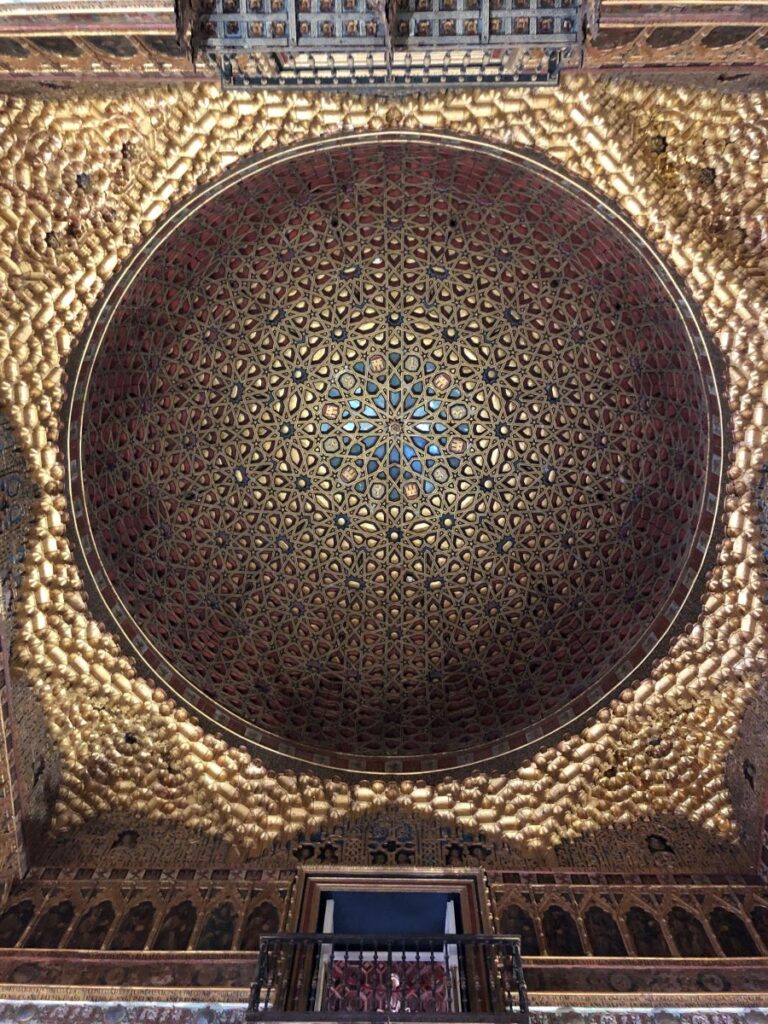
What takes one’s breath from their body though, is the dome ceiling. Looking up it is difficult not to gasp at the sight before your eyes. This current dome was rebuilt in 1427 and is entirely spectacular.
Royal Bedrooms
On the ground floor are the old royal bedrooms. These are most interesting. The lighting in this section is quite dim, perhaps to preserve the colour left in the plaster-work.
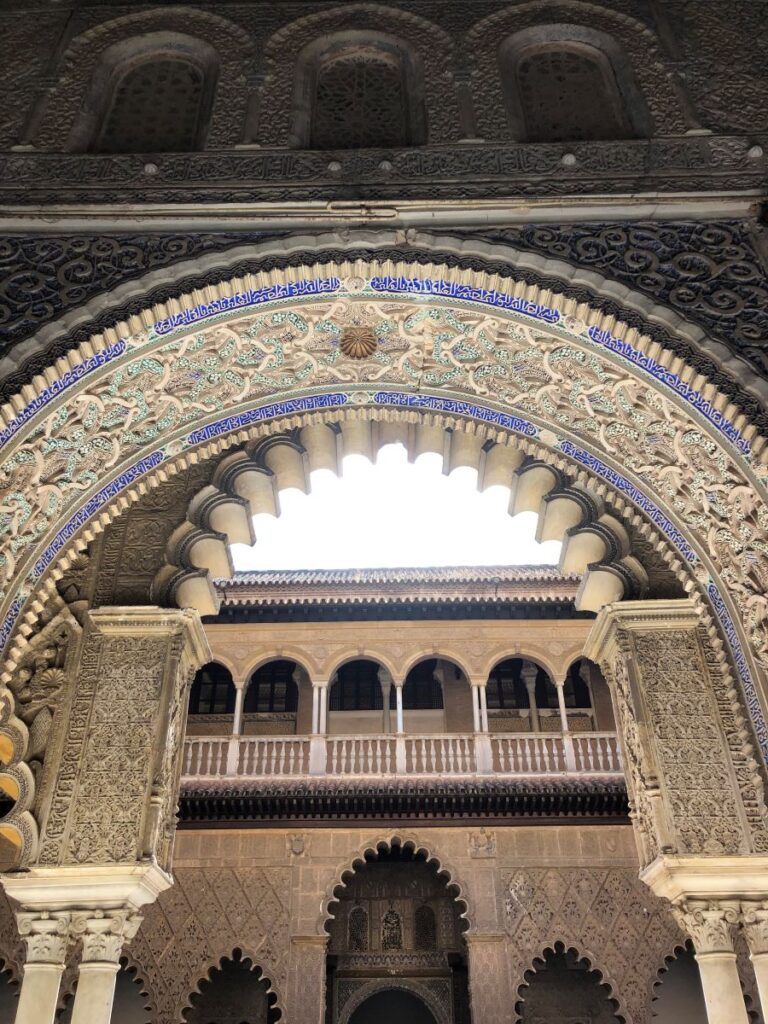
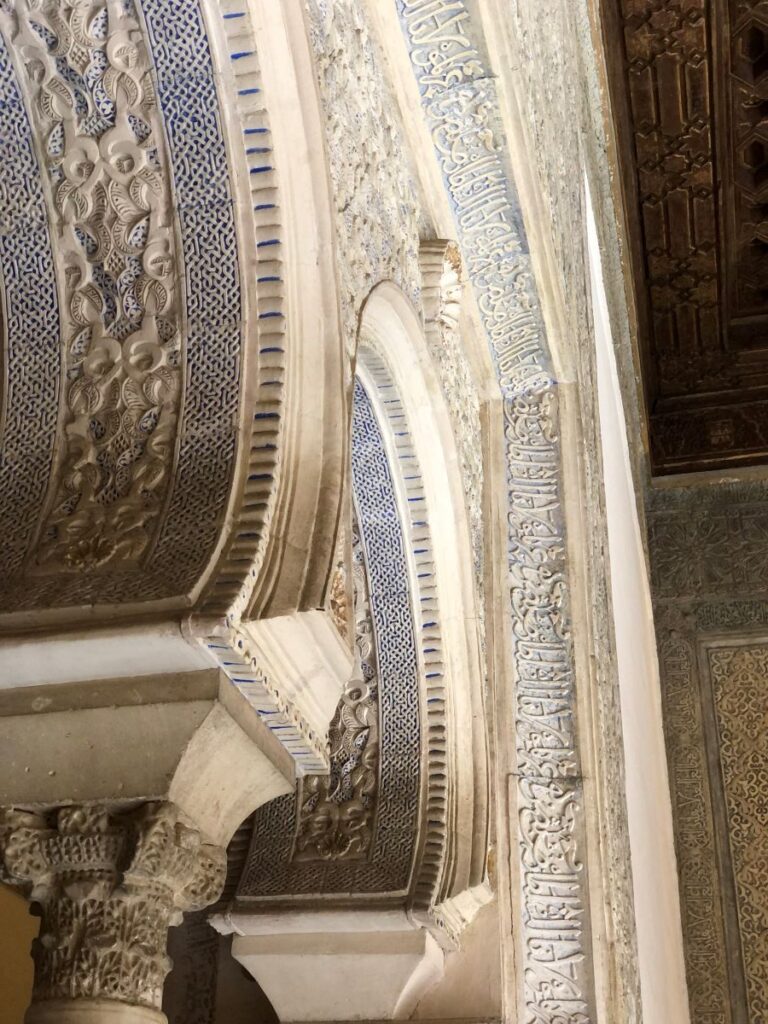
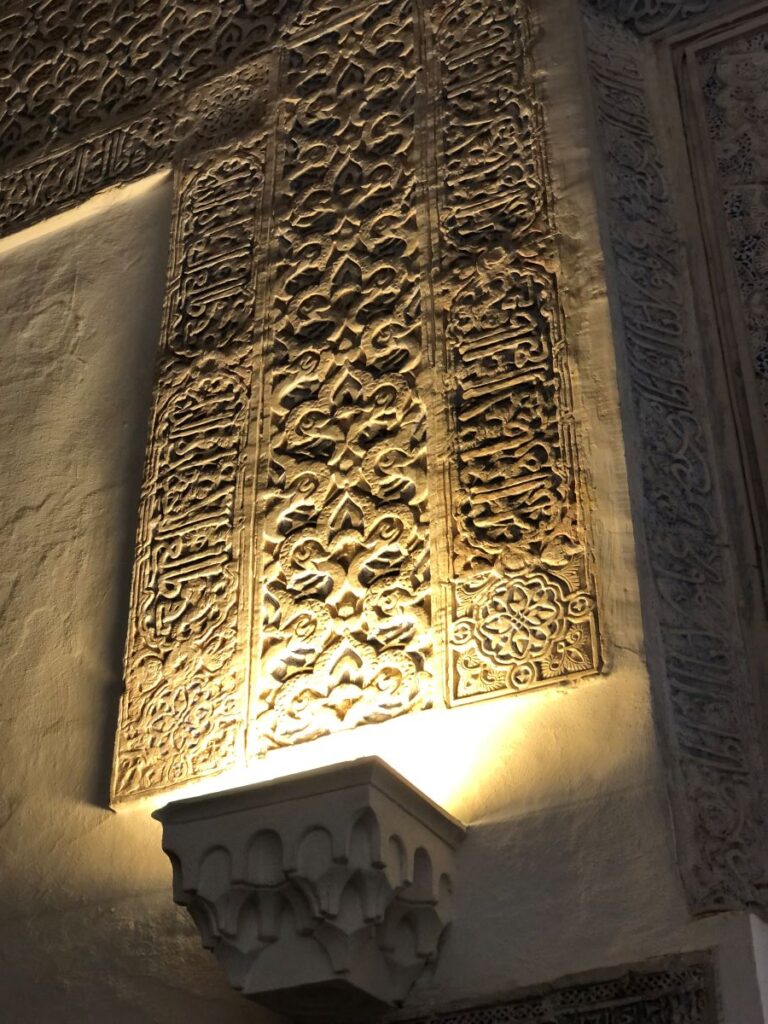
From the beautiful tile and stone floors to the tiled walls and beautiful plaster & wooden ceilings, these spaces offer a sense of awe, peace and solitude.
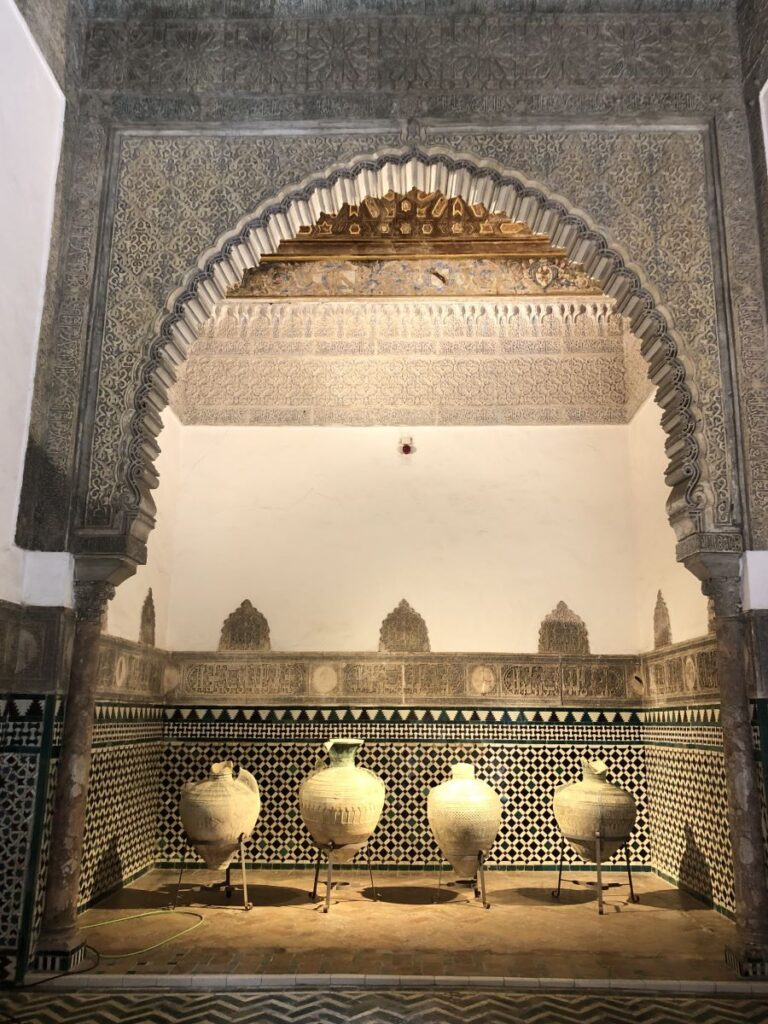
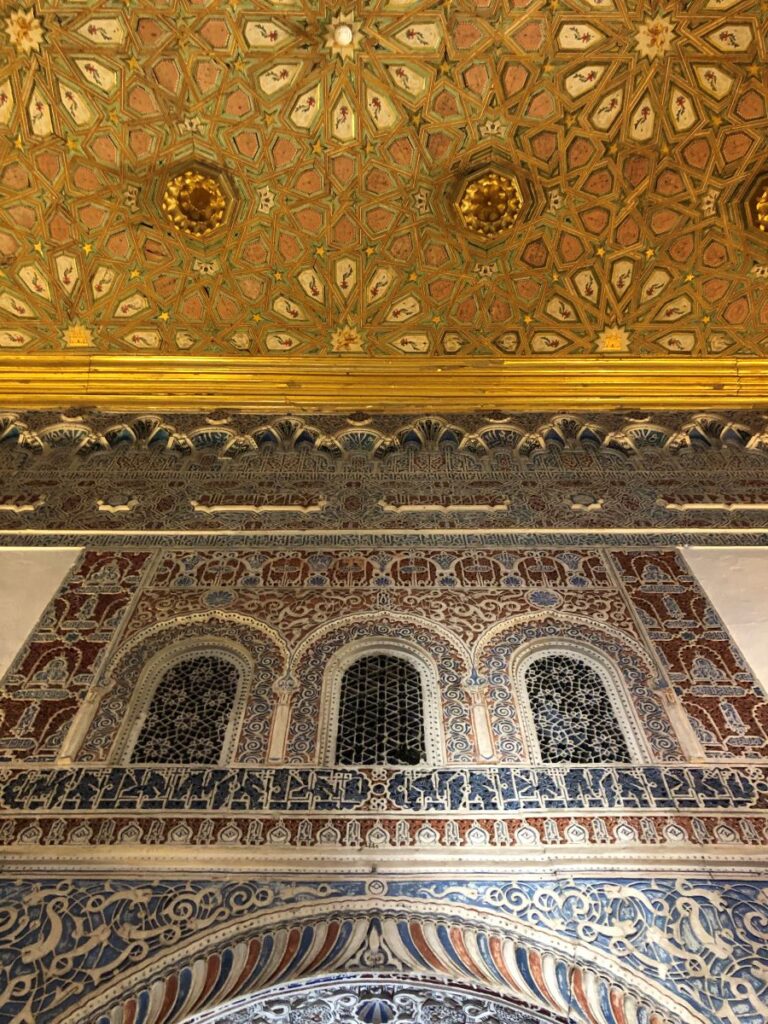
Courtyard of the Dolls
Another space that I find particularly beautiful is the Patio de las Munecas. This small bright space has a gorgeous glass ceiling and currently a single large fern on the ground at centre. The purpose of the room was to divide all of the bedrooms in the palace. The upper floors were built at a later date and contain the current royal bedrooms.
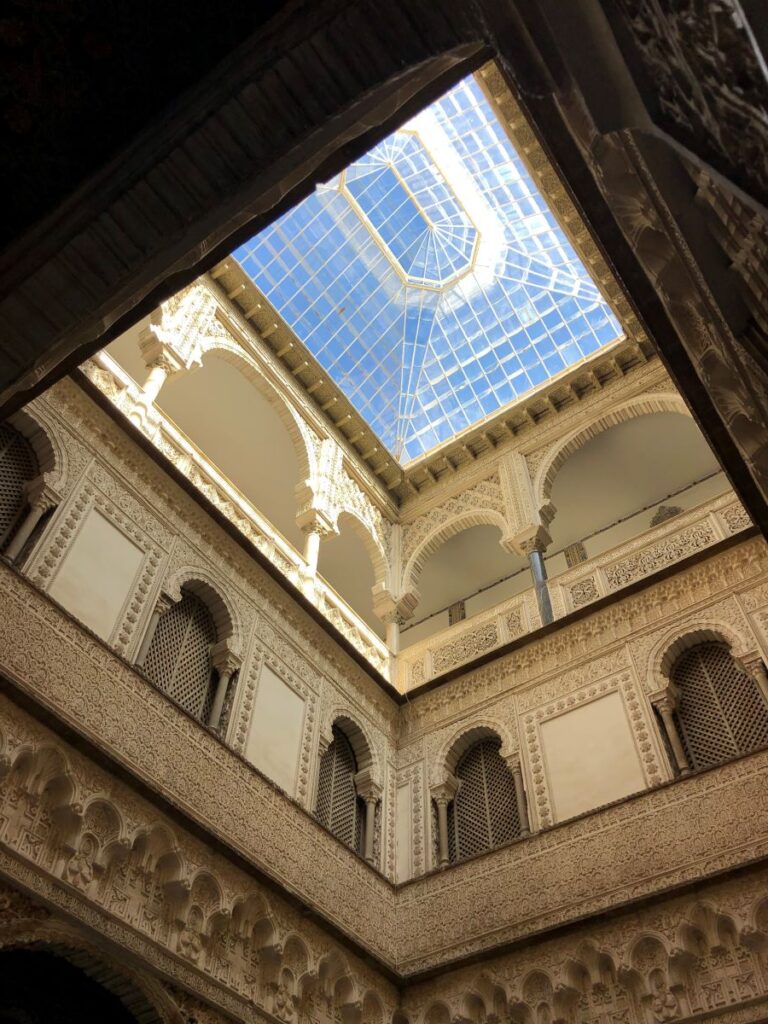
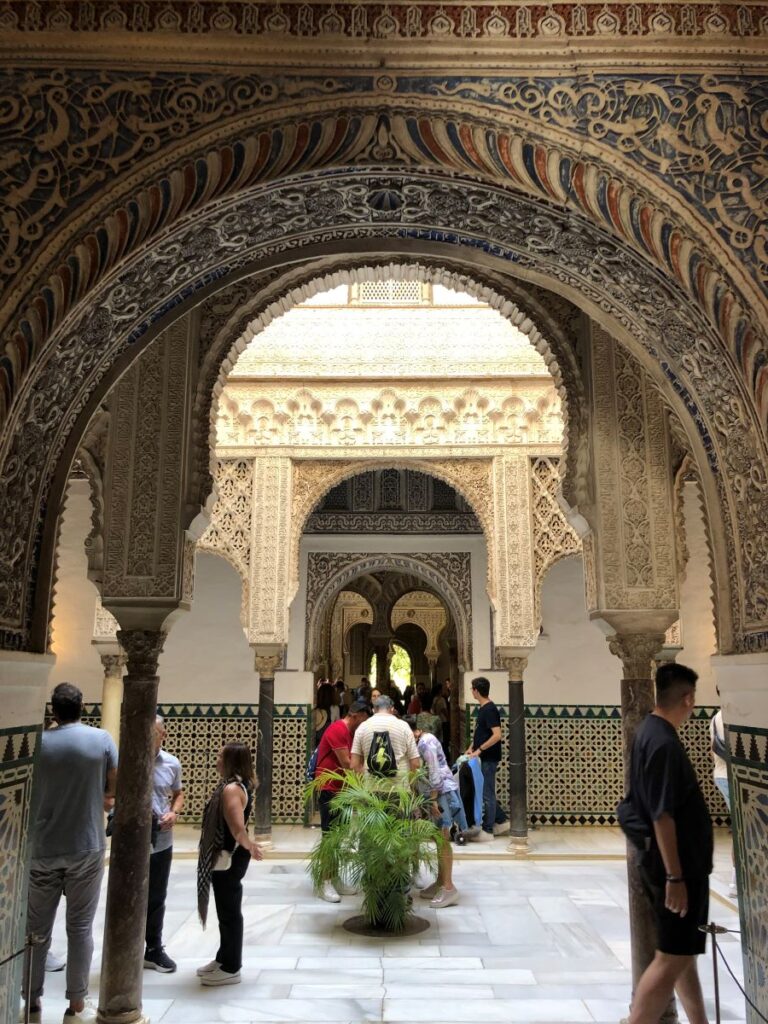
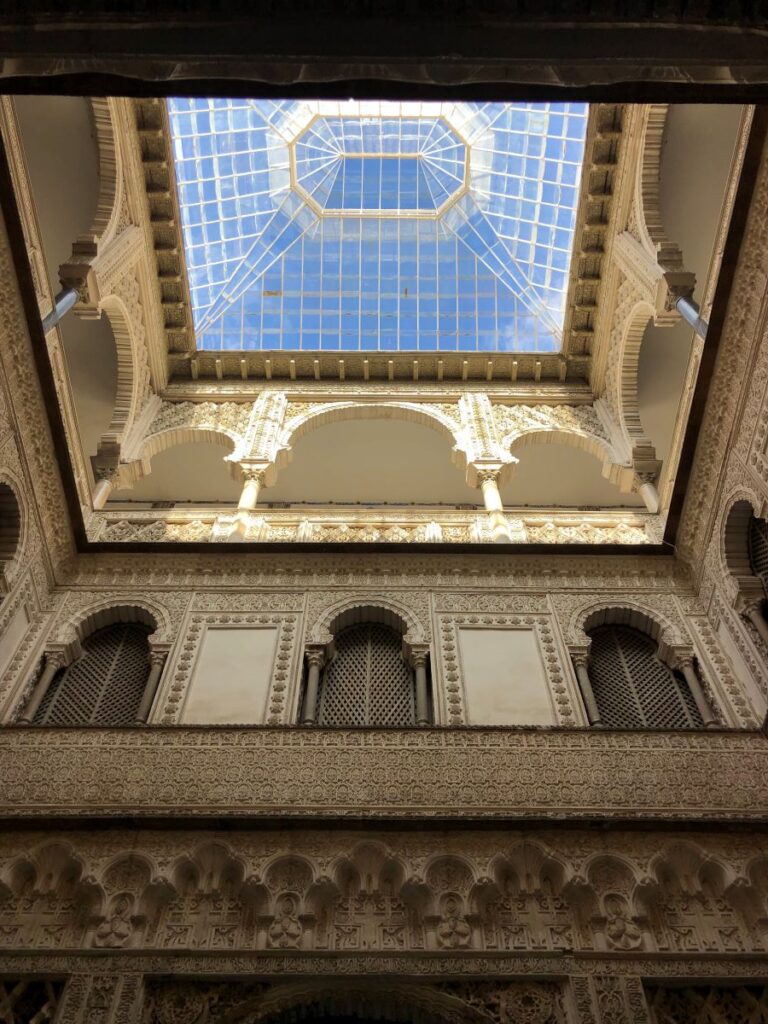
Around this tranquil courtyard, one will find the Prince’s Room, Charles V Ceiling Room and the Ambassadors Room among others.
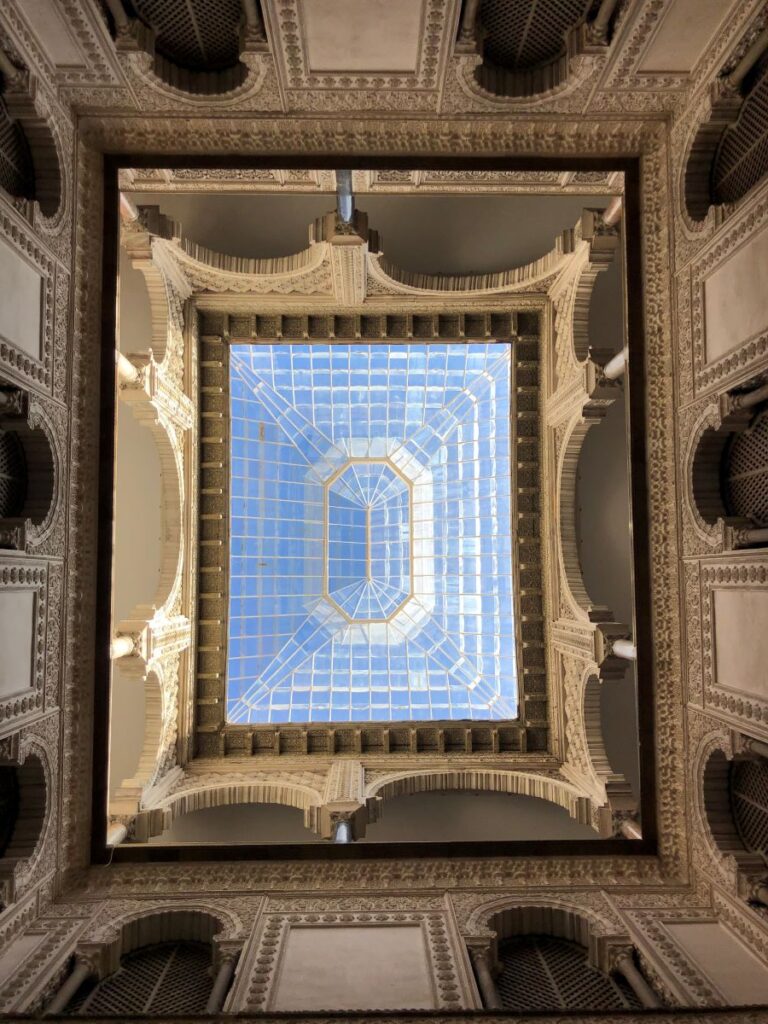
Dona Maria de Padilla Baths
A most intriguing place is the dark crypt, part of the original gardens of the palace built in the 12th century. These pools are fed by an underground cistern and consist of a main section and two narrow crypts at either side. This has been a recreation area since its inception as the temperatures inside are a full 15 degrees cooler the outside.
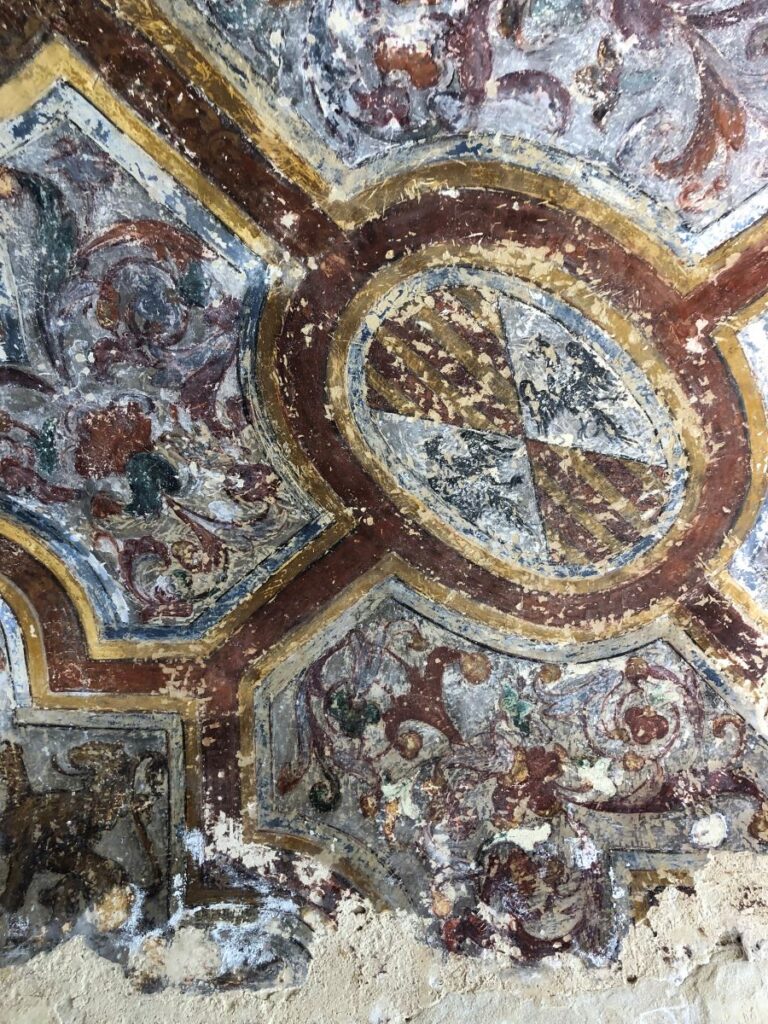
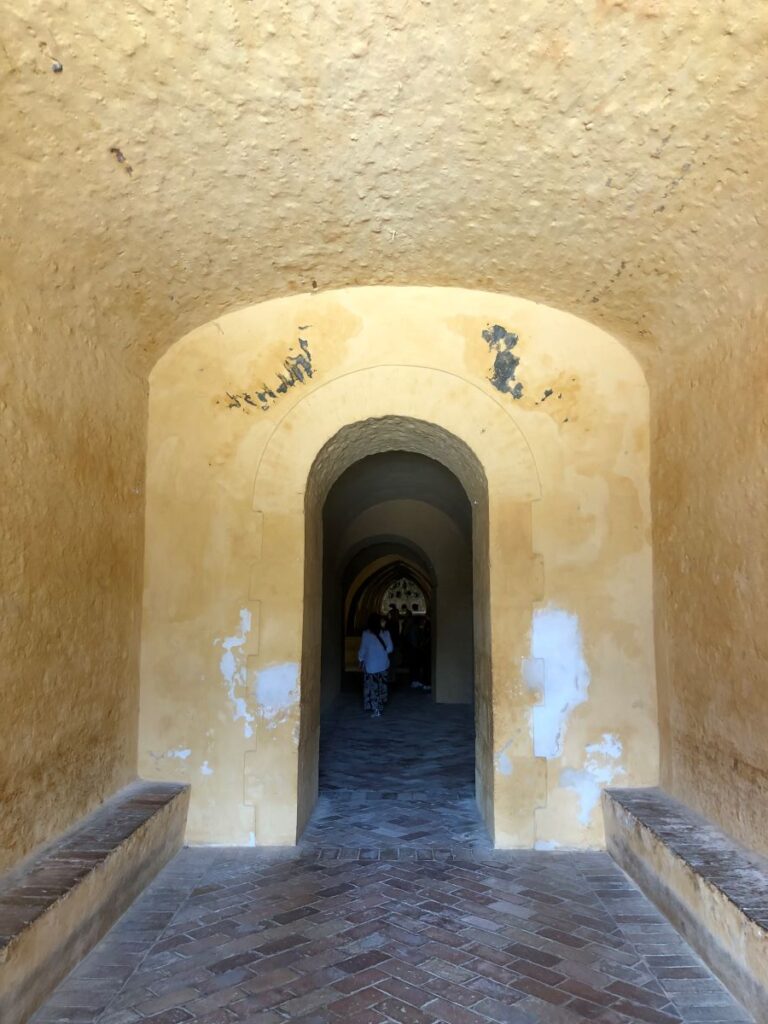

Visitors can enter and walk to a certain point, but no further. What we cannot see are the exquisite renaissance frescoes that exist in the porticoes along the entire length of the crypt.
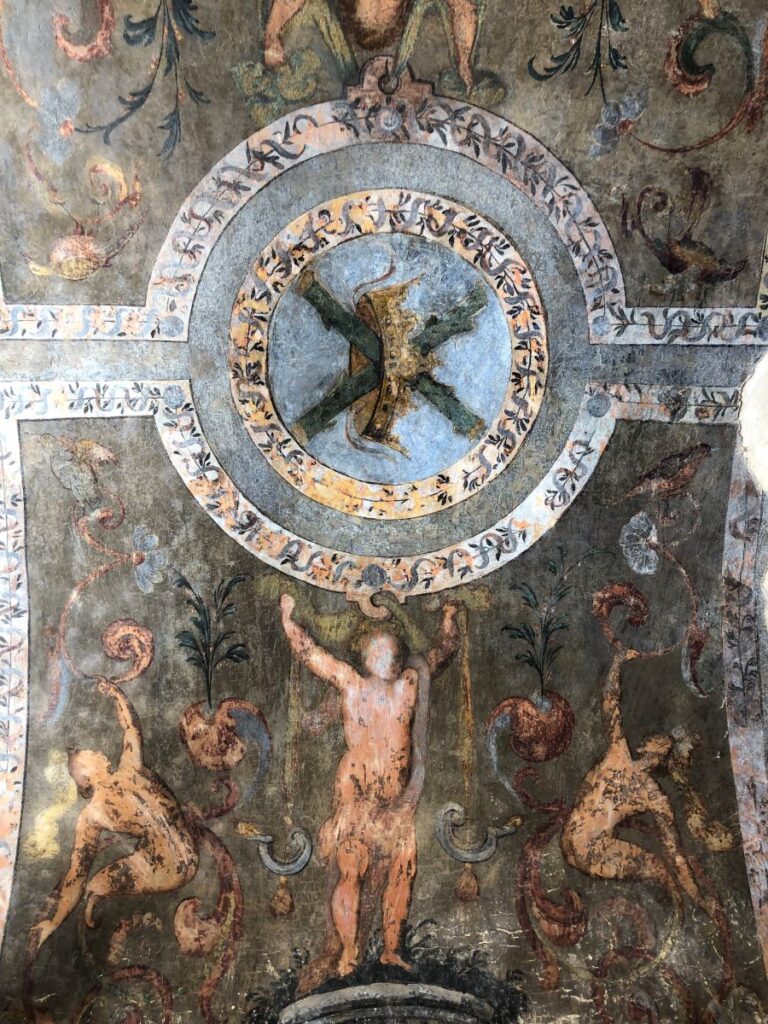
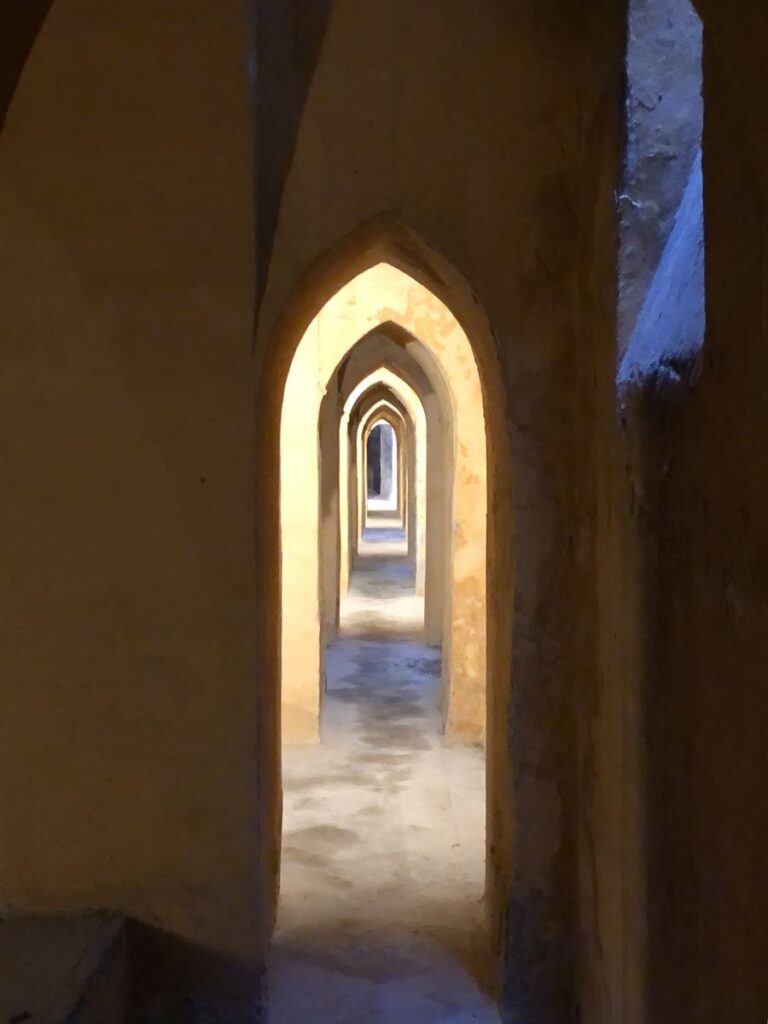
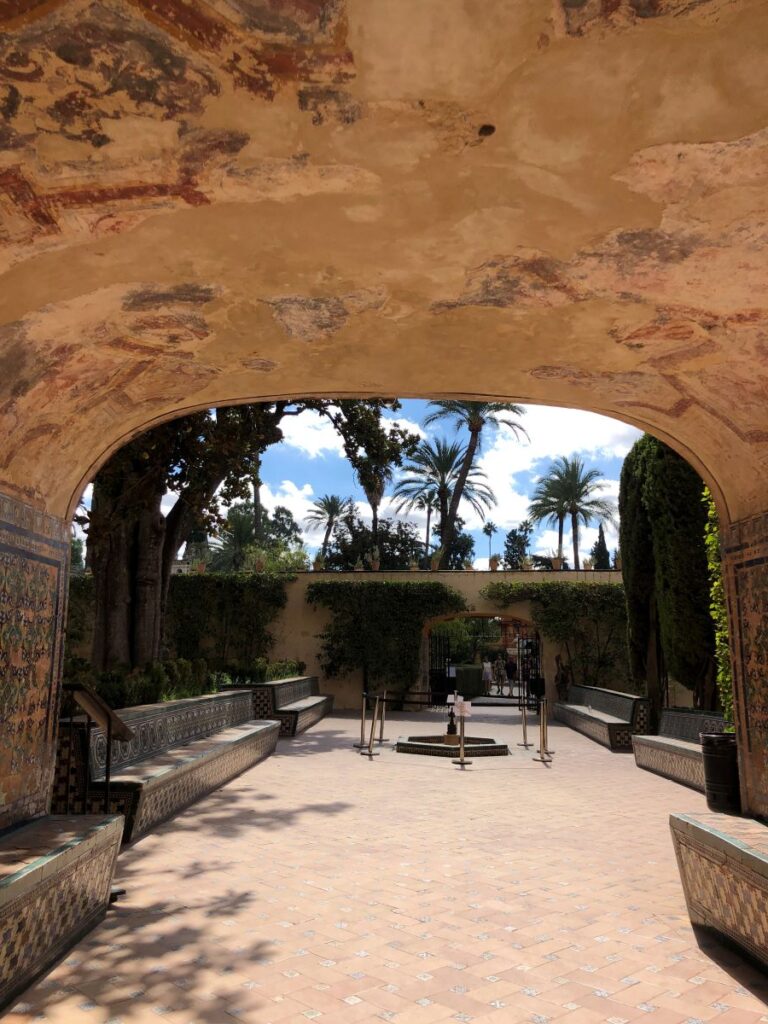
Legend tells us that Dona Maria, the mistress of King Pedro I the Cruel, used to run through the palace naked and use these pools to bath. King Pedro I would make all visitors drink from this water, her bath.

I have to let you know that this palace is extensive. Two hours had passed and I was feeling so overwhelmed and a little exhausted to be honest. There is so much that my eyes wanted to absorb but were unable to. The tile work alone is incredible. The completely hand carved and extensive plaster-work is breathtaking. The overall architecture of the palace is exquisite. Thank goodness for the gardens. Coming up in the next post, a sublime respite from the palace.
